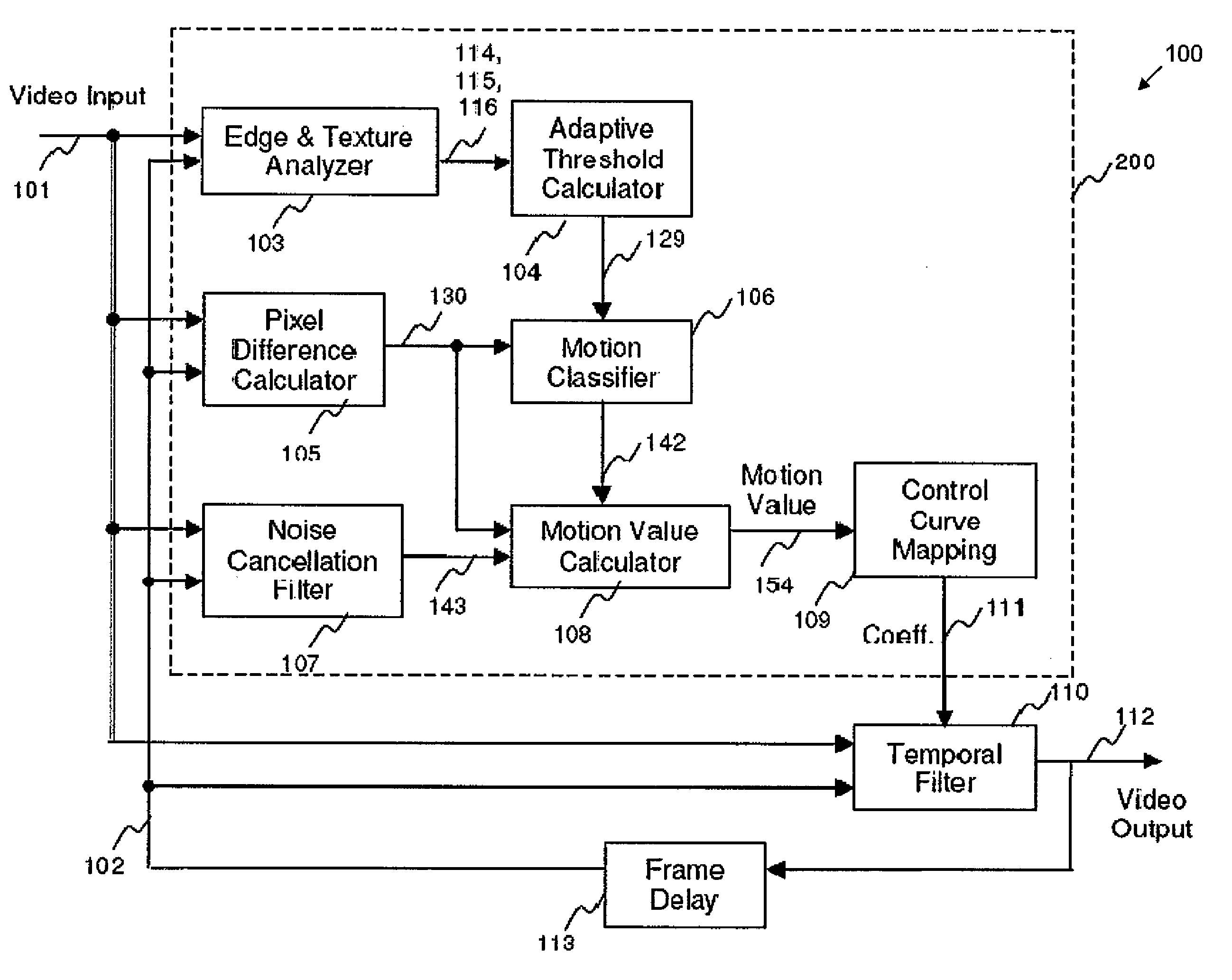Apparatus and method of motion detection for temporal mosquito noise reduction in video sequences
a motion detection and mosquito technology, applied in the field of motion detection for temporal mosquito noise reduction, can solve the problems of reducing the ability of conventional spatial noise reduction systems to reduce temporal fluctuation, affecting etc., to achieve the effect of improving the robustness of motion detectors against noise, reducing noise, and sacrificing small edges and details
- Summary
- Abstract
- Description
- Claims
- Application Information
AI Technical Summary
Benefits of technology
Problems solved by technology
Method used
Image
Examples
Embodiment Construction
[0048]FIG. 1 illustrates a motion detection and temporal filtering apparatus 100 according to one embodiment.
[0049]The apparatus 100 receives a first video input signal 101. The first video input signal 101 is a video signal having a luminance Y component and chrominance UN components. The apparatus 100 includes a motion detector 200, a temporal filter 110 that outputs a video output signal 112, and a frame delay 113. Both the motion detector 200 and the temporal filter 110 receives the video input signal 101 and a second video input signal 102. The second video input signal 102 is the filtered video output signal of the apparatus 100 with one frame delay by the frame delay 113. Accordingly, the second video input signal 102 also includes respective luminance Y and chrominance UN components. The first video input signal 101 and the second video input signal 102 are representative of the current frame and the filtered previous frame, respectively. The motion detector 200 includes an ...
PUM
 Login to View More
Login to View More Abstract
Description
Claims
Application Information
 Login to View More
Login to View More - R&D
- Intellectual Property
- Life Sciences
- Materials
- Tech Scout
- Unparalleled Data Quality
- Higher Quality Content
- 60% Fewer Hallucinations
Browse by: Latest US Patents, China's latest patents, Technical Efficacy Thesaurus, Application Domain, Technology Topic, Popular Technical Reports.
© 2025 PatSnap. All rights reserved.Legal|Privacy policy|Modern Slavery Act Transparency Statement|Sitemap|About US| Contact US: help@patsnap.com



